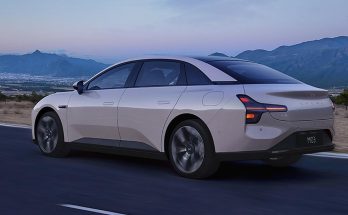Introduction to Taxi Tesla
Imagine taking a ride in a taxi that not only transports you to your destination but also showcases the future of sustainable transportation. Welcome to Taxi Tesla—a revolutionary step forward in eco-friendly travel. This electric marvel has recently achieved an astonishing milestone, traveling 690 thousand kilometers! It’s not just another number; it tells a remarkable story about innovation, efficiency, and environmental impact. As we delve into this impressive journey, let’s explore what makes Taxi Tesla stand out and what it means for the future of urban transport. Buckle up; it’s going to be an enlightening ride!
The Importance of Electric Taxis in Transportation
Electric taxis are reshaping urban transportation. They provide a cleaner alternative to traditional vehicles, significantly reducing emissions in busy city centers.
As cities grapple with air quality issues, electric taxis play a crucial role in promoting sustainability. By cutting down on greenhouse gases, they contribute positively to public health and the environment.
Furthermore, these electric alternatives offer cost savings for both drivers and passengers. Charging an electric vehicle is often cheaper than fueling a gasoline car. This financial benefit can encourage more riders to choose green options.
The quiet operation of electric models also enhances the overall passenger experience. A serene ride through bustling streets makes commuting much more pleasant.
With advances in battery technology and infrastructure, the availability of electric taxis will continue to grow. This shift not only meets evolving consumer preferences but also aligns with global goals for sustainable development.
The Impressive Milestone of 690 Thousand Kilometers
Reaching 690 thousand kilometers is no small feat for a taxi. This milestone showcases the durability and efficiency of electric vehicles in real-world scenarios.
Every kilometer traveled represents countless rides, customer interactions, and an unwavering commitment to sustainable transport. The journey reflects not just distance but also reliability in daily operations.
Taxi Tesla has become more than just a mode of transportation; it’s a symbol of innovation on the road. Its ability to maintain performance over such extensive use indicates strong engineering behind its design.
With each trip, this electric taxi challenges conventional beliefs about battery life and vehicle longevity. It sets a new standard for what we can expect from electric taxis moving forward.
How the Battery Life Has Held Up
Taxi Tesla has demonstrated remarkable endurance, especially when it comes to its battery life. After traveling an astounding 690 thousand kilometers, the longevity of this electric vehicle’s battery is impressive.
Regular maintenance and software updates have played a crucial role in preserving performance. The smart energy management system optimizes usage, ensuring that each charge delivers maximum efficiency.
Users report minimal degradation over time, which is a testament to Tesla’s engineering excellence. Many drivers experience only slight reductions in range even after extensive use.
The ability to fast-charge adds convenience for daily operations. This feature minimizes downtime, allowing the taxi service to maintain high availability for passengers.
With ongoing improvements in battery technology and management systems, Taxi Tesla continues to set benchmarks in sustainable transportation solutions. It serves as a model for how electric vehicles can thrive under rigorous demands while remaining reliable and efficient.
Impact on the Environment and Cost Savings
Electric taxis like Taxi Tesla significantly reduce greenhouse gas emissions. By replacing traditional fossil fuel vehicles, they help improve air quality in urban environments. Fewer carbon emissions translate to a healthier atmosphere for everyone.
Cost savings are another compelling advantage of electric taxis. Charging an electric vehicle is generally less expensive than filling up with gasoline or diesel. This lower operational cost allows drivers to save money and pass on those savings to passengers.
Maintenance costs also drop considerably with electric vehicles. There are fewer moving parts compared to combustion engines, leading to reduced wear and tear over time.
The shift towards electric taxis not only benefits the environment but also enhances financial efficiency for taxi operators, making it a win-win solution for modern transportation needs.
Future Plans for Taxi Tesla and Electric Taxis
Taxi Tesla is not resting on its laurels after hitting the remarkable milestone of 690 thousand kilometers. The future looks bright, with plans to expand their fleet. Adding more Teslas will enhance their service capacity and availability.
Investing in charging infrastructure is also a priority. They aim to collaborate with local governments and businesses for strategically placed charging stations. This ensures drivers can recharge quickly between shifts, maximizing operational efficiency.
Moreover, Taxi Tesla envisions integrating advanced technology into their operations. Features like real-time data analytics and AI-driven routing are set to optimize performance further.
Sustainability remains at the core of these future initiatives as well. By focusing on renewable energy sources for charging, they seek to make electric taxis an even greener alternative in urban transport systems.
Conclusion
Taxi Tesla has made an impressive mark in the world of transportation, having traveled 690 thousand km. This remarkable achievement highlights not only the durability and efficiency of electric vehicles but also their growing role in sustainable urban mobility.
The journey showcases how electric taxis can revolutionize our commute while being environmentally friendly. As cities increasingly prioritize green initiatives, Taxi Tesla sets a shining example for others to follow.
With plans for further expansion and innovation on the horizon, it’s clear that electric taxis are here to stay. The milestone reached by Taxi Tesla is just the beginning of what could be a greener future for transportation worldwide.



